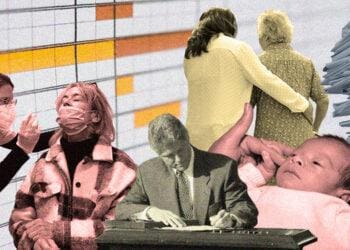As COVID-19 sweeps the country, employers are wondering how to handle their workforces. Attorneys from Poyner Spruill tackle employers’ concerns at the moment, from establishing leave-sharing programs to changes in an employee’s visa status.
The threat posed by the novel coronavirus has left employees with seemingly endless questions: Can I work from home? Can I receive benefits and be paid? Can I work part-time now? What if I’m sick?
Here, we answer the most common questions about employee benefits, labor and employment regulations and immigration concerns.
Employee Benefit Questions
If I furlough or lay off employees, can I continue some or all of their benefits during the leave?
There may be ways to continue some or all benefits during a furlough or layoff. Each plan is unique, however, and the exact terms must be reviewed. Many plans include a provision that employees be “employed” or “actively at work” and, therefore, employees may lose eligibility under the terms of the plan if they are not performing services. In addition, service requirements for eligibility (such as offering benefits only to employees working at least 30 hours per week) may cause an employee to lose eligibility during a temporary leave (but not in all circumstances). However, many plans include specific provisions extending eligibility during leaves of absence (including unpaid leaves) or following layoffs. Thus, each plan must be reviewed to make this determination.
However, even if benefits would be discontinued, an employer might assist employees to continue their benefits by subsidizing COBRA coverage or assisting employees by converting fully-insured policies and providing a severance payment to cover the costs. Further, many life and disability policies include provisions that waive waiting periods and other limitations if an employee is rehired within a certain period of time after termination. These provisions may mitigate the impact of temporary loss of coverage and should be reviewed in creating a benefit strategy.
Can I establish a leave-sharing program to allow employees to assist one another with COVID-19 situations?
Yes, if designed properly, the donated leave will not be treated as wages subject to income and payroll taxes for donating employees and, instead, will be treated as wages to the employee receiving the donated leave. As with all tax matters, the rules can be complex, so employers should consult with legal counsel in designing and documenting the leave-sharing program.
If employees’ hours are reduced and they will lose health coverage, at what point must COBRA notices be sent?
As noted above, employees who experience a reduction of hours may lose eligibility under health plans, resulting in a qualifying event for which the employer would need to offer COBRA. The COBRA election notice must be sent within a certain time after the “qualifying event.” The qualifying event will be the date coverage would otherwise end due to termination or reduction of hours. Thus, as with the question above, it is critical to understand when coverage will end under the terms of each plan.
For example, if an employee is temporarily laid off on March 17 (and therefore has a termination of employment on that date) and health coverage under the plan ends at the end of the month that includes termination, then the qualifying event is March 31. The COBRA notice and election process should run from that date, even if the employer decides to pay all or a portion of COBRA to assist employees in extending benefits. On the other hand, if the plan provides that coverage will end on the last day of the month that is at least 60 days after a temporary layoff, then the qualifying event date is May 30, and the COBRA notice and election process generally should begin at that time.
Failure to provide COBRA notices promptly can result in significant liability. Thus, each employer should work with their vendor and benefits counsel to ensure the notice is properly provided based on the terms of its particular plan(s).
Can employees receive a loan or hardship distribution from their retirement plan on account of expenses related to COVID-19?
The IRS has not specifically addressed plan loans or hardship distributions for COVID-19 or any financial hardship that may result from a participant or family member contracting the virus. Several advocacy agencies have requested specific relief to make hardship distributions easier to obtain.
Loans from 401(k) and 403(b) plans generally are not conditioned on participants incurring a hardship (although the terms of each plan should be reviewed). Therefore, any loan feature would remain available to participants who need a loan to help cover COVID-19-related expenses. However, no relief has yet been provided for participants who are already at the limit on loans (either in number or amount). Therefore, participants who have already taken the maximum available loan cannot, absent IRS relief, take additional loans on account of COVID-19.
Hardship distributions from a 401(k) or 403(b) plan generally are available only if necessary to satisfy an immediate and heavy financial need – which does include potential COVID-19-related hardships, including:
- Medical expenses of the participant, spouse and dependents and
- Eviction from, or foreclosure on the mortgage of, the participant’s primary residence.
Keep in mind that legislation has expanded the types of contributions a plan may allow the participant to access for a hardship distribution and lightened the documentation requirement of administrators. Access to these other contributions for hardships may provide additional relief.
Note that it is unclear whether the Federal Emergency Management Agency’s (FEMA) emergency declaration regarding COVID-19 allows a hardship distribution under the FEMA disaster provisions of the new hardship regulations. If so, a hardship distribution would be permitted for expenses and losses (including loss of income) incurred by the participant on account of COVID-19, up to $100,000. Participants would also be able to spread the income tax burden on the distribution over a three-year period and may be allowed to repay the distribution back into a retirement plan for three years.
457(b) plans (a special defined contribution plan available only to tax-exempt entities) may permit an “unforeseen emergency” distribution when faced with a severe financial hardship resulting from illness and medical care for the participant or beneficiary, but not merely due to loss of income. It does not have a similar provision for disasters.
Pension plans and cash balance plans do not permit hardship distributions or loans. However, the SECURE Act, which passed in late 2019, would allow an employer to add a permanent or temporary ability to receive in-service distributions for employees who are at least 59.5 years old.
Does my health plan have to cover COVID-19 diagnosis and treatment expenses at a reduced cost-sharing? (Updated March 19, 2020)
Yes, the Families First Coronavirus Response Act, signed on March 18, 2020, requires that all private health plans (both fully insured and self-insured plans) provide coverage for the diagnosis and treatment of COVID-19 without any cost sharing (such as deductibles, copayments and coinsurance). In addition, plans cannot require prior authorization for those services. This requirement applies beginning March 18, 2020 through the end of the national emergency period.
Can my high-deductible health plan cover COVID-19 diagnosis and treatment expenses with no or reduced cost-sharing? (Updated March 19, 2020)
Beginning March 18, 2020, the plan must cover these expenses. Before that date, the plan was permitted to cover those services without any cost sharing. On March 11, the IRS issued Notice 2020-15, permitting an HDHP to allow for COVID-19 testing and treatment without a deductible or with a deductible below the minimum annual deductible and that such waiver or lessening of deductible would not affect the status of the plan as an HDHP. Plans may need to be amended if the company wishes to provide these enhanced benefits.
Is a participant allowed to make changes to his election under a Code Section 125 (cafeteria) plan due to COVID-19?
There is no special provision allowing participants to change elections to add or drop coverage due to COVID-19. However, a change in status, like a reduction in hours, may arise under COVID-19 for the participant (or his spouse or dependents), which could allow for an election change. Any election change must be consistent with the change in status. Employers should carefully review plan documents to discern what election change options are available and how employees taking FMLA leave will pay for any coverage provided during that leave.
Other plans and agreements to consider with COVID-19 related issues:
- Employers should review their short-term disability policies to see if COVID-19-related illnesses may be covered. If so, employers should be prepared to provide participants with notices or paperwork as needed.
- Employers with collectively bargained employees should refer to their collective bargaining agreements, as some may create additional obligations for the employer to pay for lost time under certain circumstances.
Employment Questions
What is the Families First Act?
The Families First Act Coronavirus Response Act (the Act) was passed by Congress in response to the coronavirus pandemic. It includes new employee leave entitlements under the Emergency Family Medical Leave Expansion Act (EFMLEA) and the Emergency Paid Sick Leave Act (EPSLA).
Is my business covered by the leave provisions in the new Families First Act?
Private employers with fewer than 500 employees and most public employers are subject to the leave requirements of the Act.
When counting employees to determine whether an employer is over or under the 500-employee threshold:
- You must count employees on leave; temporary employees who are jointly employed by you and another employer (regardless of whether the jointly-employed employees are maintained on only your or another employer’s payroll); and day laborers supplied by a temporary agency (regardless of whether you are the temporary agency or the client firm if there is a continuing employment relationship); and
- If two entities are found to be joint employers, all of their common employees must be counted.
Which employees are eligible for leave under the two laws?
Employees who have worked for an employer for at least 30 days are entitled to EFMLEA leave. There is no similar requirement for EPSLA leave; employees are eligible for leave under that provision immediately upon hire.
Employers can elect to exclude health care providers and emergency responders from the benefits provided under the EPSLA and EFMLEA. There is no definition of emergency responder in the Act, but the definition of “health care provider” from the FMLA is incorporated into the Act.
Additionally, the EFMLEA contains a provision empowering the Secretary of Labor to exempt small businesses with fewer than 50 employees from the requirements of the EFMLEA if it would jeopardize the viability of the business. The Secretary of Labor has not implemented regulations addressing this potential exemption.
What are the reasons employees can take leave?
Under the EFMLEA, eligible employees who are unable to work (or telework) because they need to care for a child under 18 because the child’s school or place of care has been closed or because the child care provider is unavailable due to the COVID-19 emergency can take up to 12 weeks of leave. Employees who need to take leave for other reasons not covered by EFMLEA, including leave to care for themselves or a family member due to COVID-19, may still be eligible under the FMLA’s standard provisions for unpaid leave.
Under the EPLSA, eligible employees can take two weeks of paid leave for the following reasons:
- If the employee is subject to a federal, state or local quarantine or isolation order related to the coronavirus;
- If the employee has been advised by a heath care provider to self-quarantine due to concerns related to the coronavirus;
- If the employee is experiencing symptoms of the coronavirus and are [is] seeking a medical diagnosis;
- If the employee is caring for an individual who is subject to a federal, state or local quarantine or isolation order related to the coronavirus, or who has been advised by a heath care provider to self-quarantine due to concerns related to the coronavirus;
- If the employee is caring for their son or daughter if the school or place of care of the son or daughter has been closed or their child care provider is unavailable due to coronavirus precautions; and/or
- If the employee is experiencing any other substantially similar condition specified by the Secretary of Health and Human Services in consultation with the Secretary of the Treasury and the Secretary of Labor.
How much leave are employees entitled to, and what portion is paid?
Under the EFMLEA, employees who have worked for an employer for at least 30 days are entitled to up to 12 weeks of job-protected leave. The first 10 days of EFMLEA leave are unpaid. The employee has the option, but cannot be required, to use vacation, paid time off, or EPSLA (if eligible) to receive pay during the first 10 days of EFMLEA. After 10 days of unpaid EFMLEA, where additional leave is needed, employees will receive paid leave for the remaining 50 days that will be no less than two-thirds of the employee’s usual pay based on the employee’s regular work schedule, up to $200 per day and no more than $10,000 total. For employees with varying schedules, the EFMLEA provides that the pay will be equal to the average number of hours per day that the employee was scheduled to work over the previous six-month period.
Under the EPSLA, full-time employees are entitled to up to 80 hours of job-protected leave. Employers cannot require employees to use other paid leave prior to or concurrent with EPLSA leave. EPSLA leave is paid at a rate that is the greater of the employee’s regular rate of pay or the minimum wage rate in the employee’s jurisdiction, up to $511 per day and $5,100 total, for leave taken for the employee’s own condition. For employees using EPSLA to care for an individual or for child care reasons, EPSLA is paid at a rate that is equal to two-thirds of the applicable EPSLA rate, up to $200 per day and $2,000 in the aggregate.
The EFMLEA requires you to pay an employee for hours the employee would have been normally scheduled to work, even if that is more than 40 hours in a week. However, the EPSLA requires that paid sick leave be paid only up to 80 hours over a two-week period. For example, an employee who is scheduled to work 50 hours a week may take 50 hours of paid sick leave in the first week and 30 hours of paid sick leave in the second week. In any event, the total number of hours paid under the EPSLA is capped at 80.
Pay does not need to include a premium for overtime hours under either the Emergency Paid Sick Leave Act or the Emergency Family and Medical Leave Expansion Act.
If I gave my employees paid time off before April 1, 2020, do I still have to provide the paid leave after March 31, 2020?
Yes, you still must provide all of the leave described in the preceding question. An employer cannot deny paid sick leave or provide less than 80 hours of paid sick leave, even if it gave paid leave for a reason identified in the EPSLA prior to the Act going into effect.
Do I get any tax breaks for providing paid time off to employees due to COVID-19?
Yes, the Act provides a refundable tax credit for certain leave provided to employees. You may take a tax credit for 100 percent of the qualified sick leave and qualified family leave wages you pay to your employees.
An employer’s tax credit for qualified sick leave wages paid to an employee cannot exceed $200 ($511 if the employee is the one quarantined or sick) for each day (or portion thereof) for which the employee receives qualified sick leave wages, capped at 10 days per employee.
Similarly, the tax credit for qualified family leave wages paid to an employee cannot exceed $200 for each day (or a portion thereof) for which the employee receives the qualified family leave wages, capped at $10,000 per employee.
The credit is taken quarterly by offsetting the Social Security tax that you, as an employer, pay. If your credit exceeds your tax liability for the quarter, then the excess is treated as an overpayment and will be refunded to you. Employers should anticipate the difference in cash flow as a result of this and plan accordingly.
The Act also provides for a credit to employers for certain qualified health plan expenses that are allocable to such qualified sick leave wages or qualified leave wages.
I’m self-employed (or a partner in a partnership or a 2 percent owner of an S-corporation). Are there any tax benefits if I’m unable to work due to COVID-19?
Yes, if you are regularly carrying on your trade/business and you would be entitled to the sick and or family leave described for employees, then you are allowed a tax credit equal to the “qualified sick leave equivalent amount” and “qualified family leave equivalent amount.”
If you would be entitled to qualified sick leave if you were an employee, then your qualified sick leave equivalent amount is equal to the number of days you are not able to work during the year due to COVID-19 for a reason that would have entitled you to qualified sick leave if you were an employee (capped at 10 days total for all tax years), multiplied by the lesser of $200 ($511 if you are the one quarantined or sick) or 67 percent of your average daily self-employment income (100 percent if you are the one quarantined or sick).
If you would be entitled to qualified family leave if you were an employee, then your qualified family leave equivalent amount is equal to the number of days you are not able to work during the year due to COVID-19 for a reason that would have entitled you to qualified family leave if you were an employee (capped at 50 days total for all tax years), multiplied by the lesser of $200 or 67 percent of your average daily self-employment income.
In both cases, your average daily self-employment income is your net earnings from self-employment divided by 260.
Do these laws change the amount of leave an employer has to provide an employee after the COVID-19 crisis ends?
No, both the EPSLA and EFMLEA expire on December 31, 2020.
Is there a Notice Requirement?
Yes, employers are obligated to post the applicable notice (for private or federal employers, as applicable). For remote employees, the posting obligation may be satisfied by emailing or direct mailing this notice to employees or posting this notice in a conspicuous place on an employee information internal or external website. Other FAQs on physical posting can be found here.
The notice must be provided to current employees and newly hired employees. You do not have to provide the notice to anyone who was recently laid off or to anyone who is merely an applicant.
When does the Families First Act become effective?
April 1, 2020. Employers who implement the leave required under the Act before its effective date may not be eligible for tax incentives in the Act related to paid leave.
The Department of Labor will not bring enforcement actions against any public or private employer for violations of the Act occurring within 30 days of the enactment of the FFCRA (i.e. March 18 through April 17, 2020), provided the employer has made reasonable, good faith efforts to comply with the Act.
Are employees eligible for FMLA based on coronavirus fears?
When an employee has an underlying medical condition that makes their physician advise them not to come in to work, that advice may be sufficient to qualify the employee for FMLA. Provide the required notice of eligibility and a certificate of health care provider, and if the doctor’s information on the complete certification qualifies, treat the leave as FMLA.
The new laws do not address whether EFMLEA counts against an employee’s FMLA entitlement or whether employees who have previously used FMLA are entitled to the full amount of EFMLEA. The Department of Labor will issue guidelines that will hopefully address this issue.
Prior to the effective date of the Families First Act, if I close my offices and employees are unable to work from home, who must be paid?
Under the federal Fair Labor Standards Act, non-exempt employees are entitled to be paid only when they work. Therefore, if your offices are closed due to the pandemic and non-exempt employees are not working from home, they do not need to be paid wages. Check your policies to make sure you don’t have another policy stating that all staff will be paid when the office is closed due to natural disaster such as hurricane or snowstorm.
If you have such a policy, change it prior to any office closure or furlough of employees. Also, check state law to make sure there are no applicable notice periods or other state law issues. Consistent with advice from the CDC and other governmental agencies, consider being flexible in allowing non-exempt employees to use paid leave to replace lost wages.
Under the FLSA, an exempt employee is entitled to his/her full salary during any workweek in which any work is performed. If you close your offices, consider whether exempt employees are able to work from home – answering emails or taking calls. If so, you need to consider whether you want to authorize those workers to work from home. If you do authorize remote work for exempt employees, consider asking them to keep track of time worked and reporting weekly on time they spent working. Exempt employees do not have to be paid in any workweek in which no work is performed. It may be possible to reduce exempt employees’ hours of work and salaries, depending on state law, any applicable contracts and other considerations. If you need advice on this issue, contact us.
An employee comes to work with respiratory illness symptoms – can I send them home?
Yes, the EEOC guidance on pandemic response specifically permits this. That guidance can be found here. The EEOC has issued additional guidance on COVID-19 and the ADA here.
Do I need a written document on how my company will address COVID-19?
OSHA recently issued guidance recommending that employers develop an Infectious Disease Preparedness and Response Plan, addressing potential exposure for employees based on the particular workplace, procedures for prompt identification and isolation of sick employees and development of workplace protections. The guidance can be found here.
Immigration Questions
If an H-1B or E-3 employee’s worksite changes, including working from home, what does the employer need to do, if anything?
The employer must normally post the required notice at the new worksite, file a new labor condition application with the U.S. Department of Labor, and file an amended petition with U.S. Citizenship and Immigration Services unless the employee will be working within a “normal” commuting distance of 50 miles. Longer commutes have been approved as “normal if it can be proven to be a common commuting distance for that geographic area.” Another exemption to the aforementioned onerous refiling requirement is a short-term placement exemption to a changed worksite if less than 30 consecutive days or 60 days in a single calendar year.
What happens to an employee’s visa status if they are laid off or terminated?
Termination requires notification to the relevant government agency. For example, a student with an F-1 visa working under Optional Practice Training (OPT) authorization must notify the Designated School Officer (DSO) at the student’s educational institution to make changes to the student’s Form I-20 and notify SEVIS – the Student and Exchange Visitor Information System. For an H-1B employee, termination would also require an employer to pay for the reasonable costs of return transportation to the employee’s home country, something to which the employer agreed on the Form I-129, which forms part of an H-1B visa petition.
Can a foreign employee be placed on unpaid furlough?
No, an H-1B or E-3 visa employee cannot be placed on unpaid furlough because of the prevailing wage requirement for both of those visa categories. Other categories, like an L-1 intracompany transferee, do not have such a wage requirement. (However, the employer did attest that it will maintain an office as part of the L-1 visa petition. Although unlikely, USCIS can verify by an on-site compliance review, which the employer must be prepared to address with counsel should this occur.)
H-1B or E-3 employees should either be exempted from furlough or continue to be paid their normal wage. While an employer cannot require such a furloughed employee to take vacation, this is permissible if the employee decides to do so.
How will CDC travel advisories affect an employer’s ability to get employees into the U.S. on H-1B visas?
Not all H-1B workers need to travel and come back in order to be able to be in H-1B status. If they were/are already in the U.S. on an H-1B visa or are in any status that allows them to change to H-1B, such as an F visa holder on OPT, then they are not forced to travel and return to get an H-1B visa stamp in order to able to work in H-1B status.
Can a Chinese nonimmigrant visa holder who is an employee currently return to the U.S. if out of the country?
No, unless they are a citizen of Hong Kong, Macau or Taiwan. Chinese citizens may be able to stop in a third country, wait 14 days and try to enter the U.S. from that location, but this is risky. Moreover, other countries may have travel bans prohibiting their entering. However, like U.S. citizens, permanent U.S. residents (also known as green card holders) may enter the U.S. from China through designated airports: LAX, SFO, JFK, EWR, SEA, HNL, ORD, ATL, IAD, DFW and DTW.
Form I-9 Compliance
The designated representative of the company, which also can be a duly authorized agent, must physically review the documents supplied by the employee for completion of the form I-9. Any errors or omissions by the designated representative or authorized agent will be attributed to the employer, so be sure this person is adequately trained. Have a copy of the Handbook for Employers M-274 Guidance for completing Form I-9 (Employment Eligibility Verification Form) on hand to guide in completing the form and refer to examples of acceptable documents, as needed.



 Kelsey Mayo is a partner at
Kelsey Mayo is a partner at  Susie Gibbons is a partner at Poyner Spruill. Susie Gibbons regularly advises and defends clients in the full range of employment related issues, including discrimination, retaliation and harassment, wrongful discharge, Affirmative Action Plans, Fair Labor Standards Act, workplace privacy issues, and Family Medical Leave Act. Susie practices in the areas of employment compliance law, employment defense in litigation and administrative proceedings, and Affirmative Action Plans and Audit defense. She also reviews and writes employment contracts, policies and handbooks. Additionally, Susie is a regular speaker on employment matters.
Susie Gibbons is a partner at Poyner Spruill. Susie Gibbons regularly advises and defends clients in the full range of employment related issues, including discrimination, retaliation and harassment, wrongful discharge, Affirmative Action Plans, Fair Labor Standards Act, workplace privacy issues, and Family Medical Leave Act. Susie practices in the areas of employment compliance law, employment defense in litigation and administrative proceedings, and Affirmative Action Plans and Audit defense. She also reviews and writes employment contracts, policies and handbooks. Additionally, Susie is a regular speaker on employment matters. Kate Dewberry is a partner at Poyner Spruill. Kate Dewberry counsels and represents employers on employment law issues and litigation arising under federal and state laws covering leave, discrimination, and wage and hours. Kate also assists in representing clients in proceedings before administrative agencies such as the Equal Employment Opportunity Commission, the United States Department of Labor, the North Carolina Department of Labor, and the North Carolina Division of Employment Security.
Kate Dewberry is a partner at Poyner Spruill. Kate Dewberry counsels and represents employers on employment law issues and litigation arising under federal and state laws covering leave, discrimination, and wage and hours. Kate also assists in representing clients in proceedings before administrative agencies such as the Equal Employment Opportunity Commission, the United States Department of Labor, the North Carolina Department of Labor, and the North Carolina Division of Employment Security. Jennifer Parser is counsel at Poyner Spruill. Jennifer Parser’s practice includes a broad range of immigration and labor and employment matters. Jennifer is a multilingual attorney able to handle all immigration matters, including H-1B visas, L-1A, L-1B, and H visas, J-1 visas, E-1, E-2, and Australian E-3 visas, F visas and the OPT period option, the newly enacted deferred action program for undocumented youth, O and P visas, TN visas, PERM labor certifications, permanent resident, investor-, employment-, and family-based visa petitions, deportation and political asylum cases, and naturalization and renunciation matters. Jennifer can assist with EB-5 green card investor petitions, both direct and through Regional Centers for Foreign Investment. She advises on I-9 compliance, oversees and responds to issues relating to employer-generated audits, and assists with Immigration and Custom Enforcement issues. She also monitors and advises on the increasingly mandatory use of E-Verify.
After completing law school, Jennifer received a number of law certificates, including: Certificate in Public International Law, International Courts of Justice, The Hague; Certificate on E.E.C. Law, London University; and comparative private international law, Institut Universitaire de Hautes Études Internationales, Geneva, Switzerland. She is fluent in French and speaks conversational German.
Jennifer was admitted to the New York Bar in 1979 and practiced in New York until she moved to North Carolina in 2008.
Jennifer Parser is counsel at Poyner Spruill. Jennifer Parser’s practice includes a broad range of immigration and labor and employment matters. Jennifer is a multilingual attorney able to handle all immigration matters, including H-1B visas, L-1A, L-1B, and H visas, J-1 visas, E-1, E-2, and Australian E-3 visas, F visas and the OPT period option, the newly enacted deferred action program for undocumented youth, O and P visas, TN visas, PERM labor certifications, permanent resident, investor-, employment-, and family-based visa petitions, deportation and political asylum cases, and naturalization and renunciation matters. Jennifer can assist with EB-5 green card investor petitions, both direct and through Regional Centers for Foreign Investment. She advises on I-9 compliance, oversees and responds to issues relating to employer-generated audits, and assists with Immigration and Custom Enforcement issues. She also monitors and advises on the increasingly mandatory use of E-Verify.
After completing law school, Jennifer received a number of law certificates, including: Certificate in Public International Law, International Courts of Justice, The Hague; Certificate on E.E.C. Law, London University; and comparative private international law, Institut Universitaire de Hautes Études Internationales, Geneva, Switzerland. She is fluent in French and speaks conversational German.
Jennifer was admitted to the New York Bar in 1979 and practiced in New York until she moved to North Carolina in 2008.






